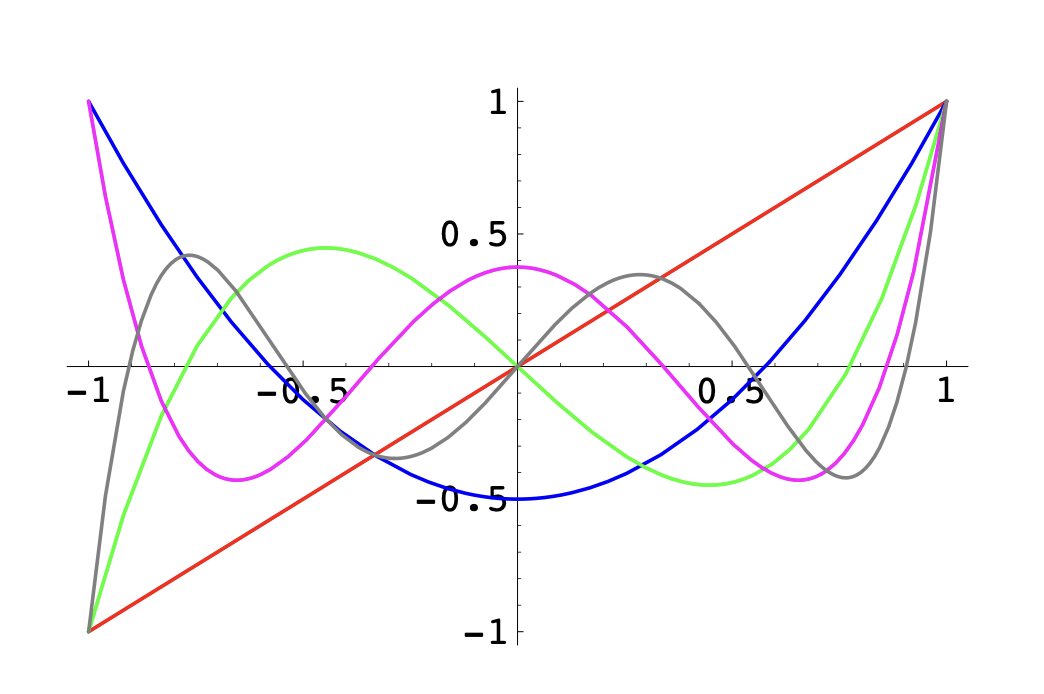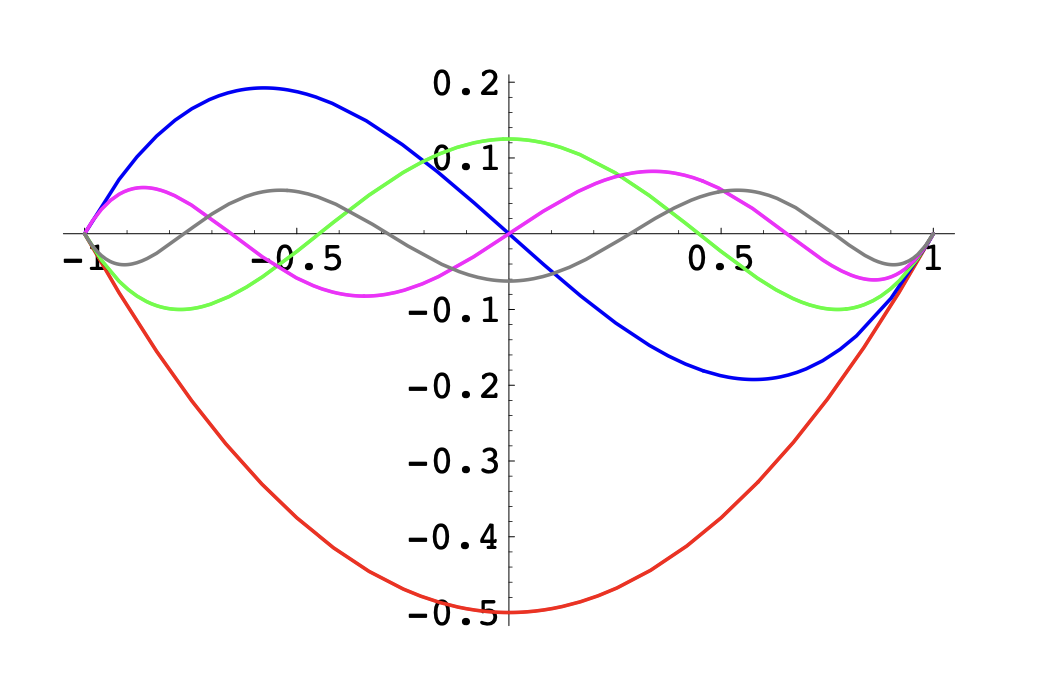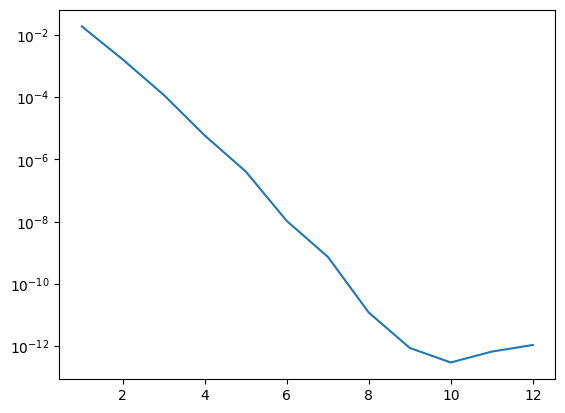13. Implementation of High Order Finite Elements#
A starting point to NGSolve-programming, used in my finite element class.
Get repository from github
Finite elements implement the basis functions:
myhoelement.hppandmyhoelement.cppFinite element spaces implement the enumeration of degrees of freedom, and creation of elements:
myhofespace.hppandmyhofespace.cpp
See Dissertation Sabine Zaglmayr , page 60 ff
Basis functions are based on Legendre polynomials \(P_i\):

and on Integrated Legendre polynomials \(L_{i+1}(x) := \int_{-1}^x P_i(s) ds\)

The integrated Legendre polynomials vanish at the boundary, and thus are useful for bubble functions.
Basis functions for the segment:
Vertex basis functions:
Inner basis functions (on edges), where \(\lambda_s\) and \(\lambda_e\) are barycentric for the start-point, and end-point of the edge:
Basis functions for the triangle:
Vertex basis functions:
Edge-based basis functions on the edge E, where \(\lambda_s\) and \(\lambda_e\) are barycentric for the start-point, and end-point of the edge:
on the edge E, there is \(\lambda_s + \lambda_e = 1\), and thus the function corresponds with the integrated Legendre polynomials \(L_{i+2}\).
on the other two edges, either \(\lambda_s = 0\) or \(\lambda_e = 0\). Thus, the argument of \(L_{i+2}\) is either \(-1\), or \(+1\). Thus, the shape function vanishes at the other two edges.
The first factor is a rational function. Then we multiply with a polynomial, such that the denominator cancels out. Thus the basis functions are polynomials.
Inner basis functions (on the triangular face F):
from ngsolve import *
from ngsolve.webgui import Draw
from myhofe import MyHighOrderFESpace
mesh = Mesh(unit_square.GenerateMesh(maxh=0.2, quad_dominated=False))
Loading myhofe library
We can now create an instance of our own finite element space:
fes = MyHighOrderFESpace(mesh, order=4, dirichlet="left|bottom|top")
and use it within NGSolve such as the builtin finite element spaces:
print ("ndof = ", fes.ndof)
ndof = 489
gfu = GridFunction(fes)
gfu.Set(x*x*y*y)
Draw (gfu)
Draw (grad(gfu)[0], mesh);
and solve the standard problem:
u,v = fes.TnT()
a = BilinearForm(grad(u)*grad(v)*dx).Assemble()
f = LinearForm(10*v*dx).Assemble()
gfu.vec.data = a.mat.Inverse(fes.FreeDofs())*f.vec
Draw (gfu, order=3);
errlist = []
for p in range(1,13):
fes = MyHighOrderFESpace(mesh, order=p)
func = sin(pi*x)*sin(pi*y)
gfu = GridFunction(fes)
gfu.Set(func)
err = sqrt(Integrate( (func-gfu)**2, mesh, order=5+2*p))
errlist.append((p,err))
print (errlist)
[(1, 0.018470559015394374), (2, 0.0016028677378609774), (3, 0.00011616801306622328), (4, 5.803815226396687e-06), (5, 4.056875365934112e-07), (6, 1.048343926954013e-08), (7, 7.453642469120944e-10), (8, 1.2057545365774509e-11), (9, 8.830930833275869e-13), (10, 3.0215817442800976e-13), (11, 6.757271820168648e-13), (12, 1.0997447299037109e-12)]
import matplotlib.pyplot as plt
n,err = zip(*errlist)
plt.yscale('log')
plt.plot(n,err);

Exercises:
Extend MyHighOrderFESpace by high order quadrilateral elements.